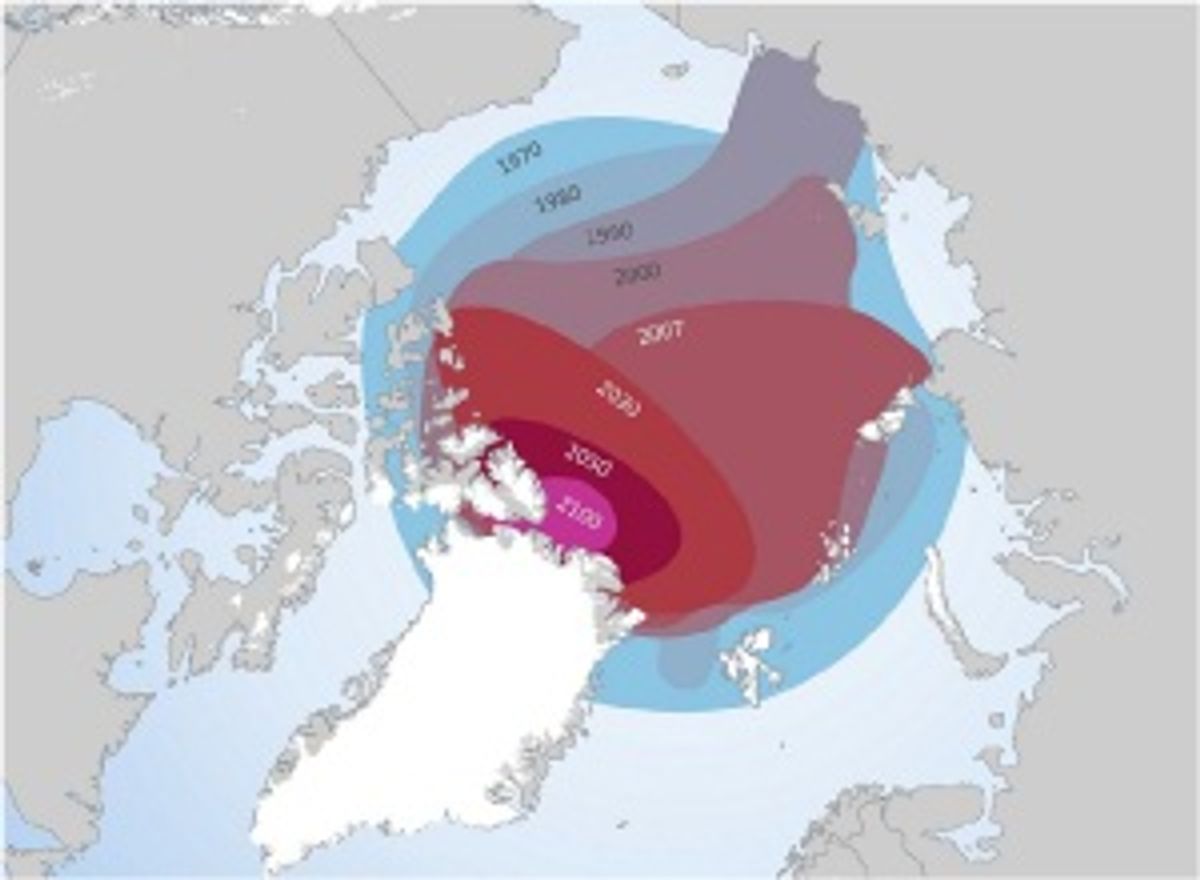The melting of northern ice continues to open long-pursued arctic sea routes to practical navigation, according to a new Arctic Institute Center for Circumpolar Security Studies (CCSS) report. By the middle of November 2012, when ice closes the Northern Sea Route (along Eurasia’s north shore from the Bering Strait to Murmansk), shipping volume will have soared more than 75% above 2011 tonnage—to about 1.5 million tons, up from 850,000 tons.
Since the Arctic Ocean ice cap seems to be retreating towards Greenland and Canada’s Nunavut Territory, the Northern Sea Route is the first of the three principal arctic sea lanes to become navigable. The map, left, shows the retreat of the ice from 1970 through 2100. (The others are the fabled Northwest Passage, which threads among Canada’s boreal islands, and the Transpolar Sea Route, straight across the top of the world from the Bering Strait passing northwest of Svalbard and on to Iceland. See map below.)
CCSS analysts Malte Humpert and Andreas Raspotnik note that some northern connections between European and Asian ports can be as much as 40 percent shorter than courses carrying ships through the Suez Canal. This saves fuel and salaries on each trip, of course. It also allows ship-owners to make more trips per year or, alternatively, make super-slow trips—attractive because dropping a ship’s speed by 40% can double its fuel efficiency, cutting both costs and emissions. (Though Humpert and Raspotnik don’t mention it, the northern route also avoids the pirate-haunted waters at the mouth of the Red Sea.)
As the authors point out, “Global shipping operations depend on three key factors: predictability, punctuality, and economy-of-scale,” all still problematic along Arctic routes. But the ice cap's steady retreat suggests that these important supports will evolve.
For another, less optimistic assessment global warming’s impact—on the endemic ranges of some infectious diseases as temperatures and sea-levels rise—tune in Tuesday, 16 October, for the free webcast, “Oceans, Climate and Human Health: the Cholera Paradigm” with former National Science Foundation director Rita R. Colwell. (I'll be moderating.) This is the first of a monthly series, “Blue Marvel—Ocean Mysteries,” presented by the Ocean Research Collaboration Network in conjunction with the National Science Foundation and the Group on Earth Observations. Register at www.oceanmysteries.net.
Douglas McCormick is a freelance science writer and recovering entrepreneur. He has been chief editor of Nature Biotechnology, Pharmaceutical Technology, and Biotechniques.





